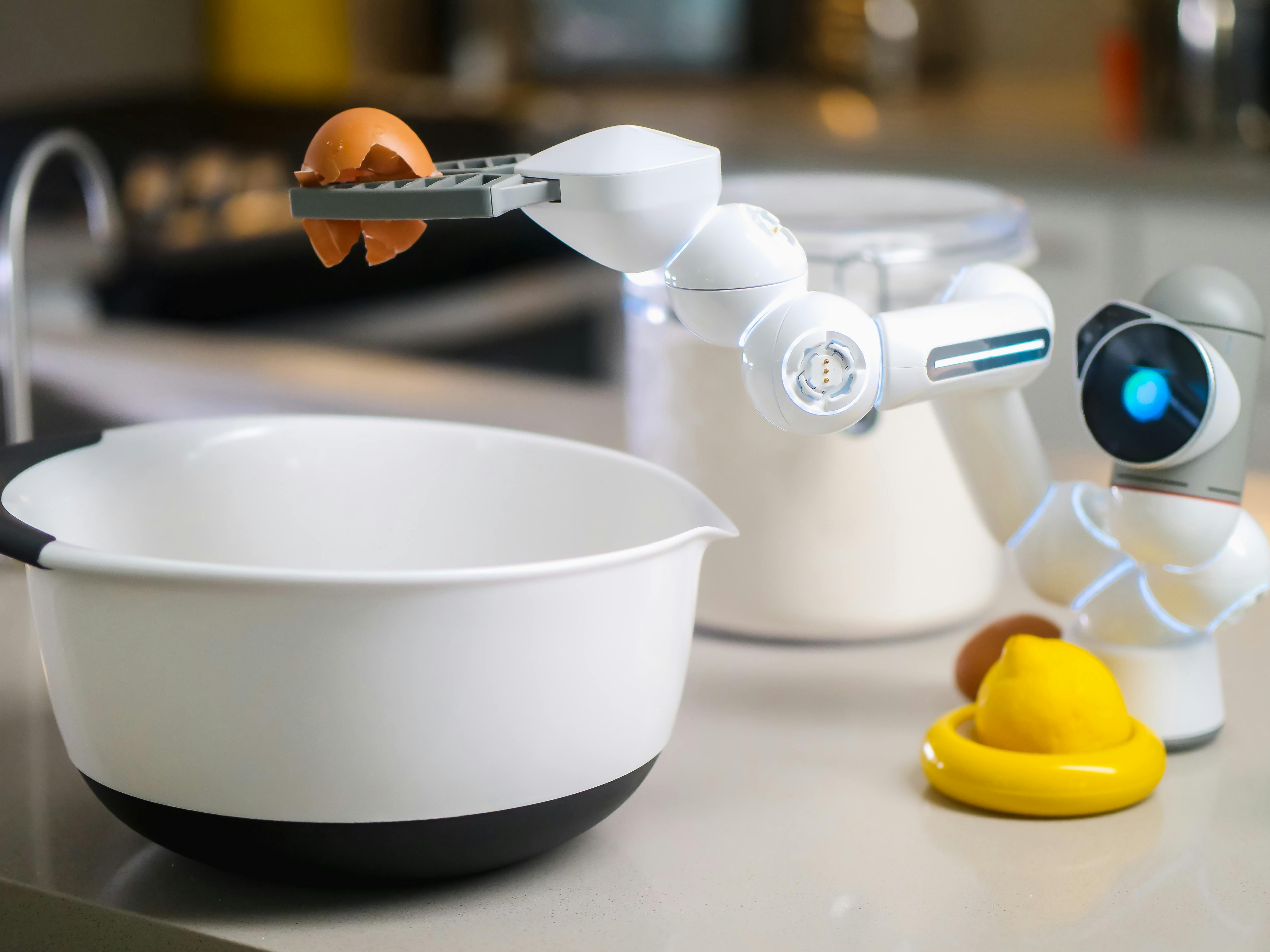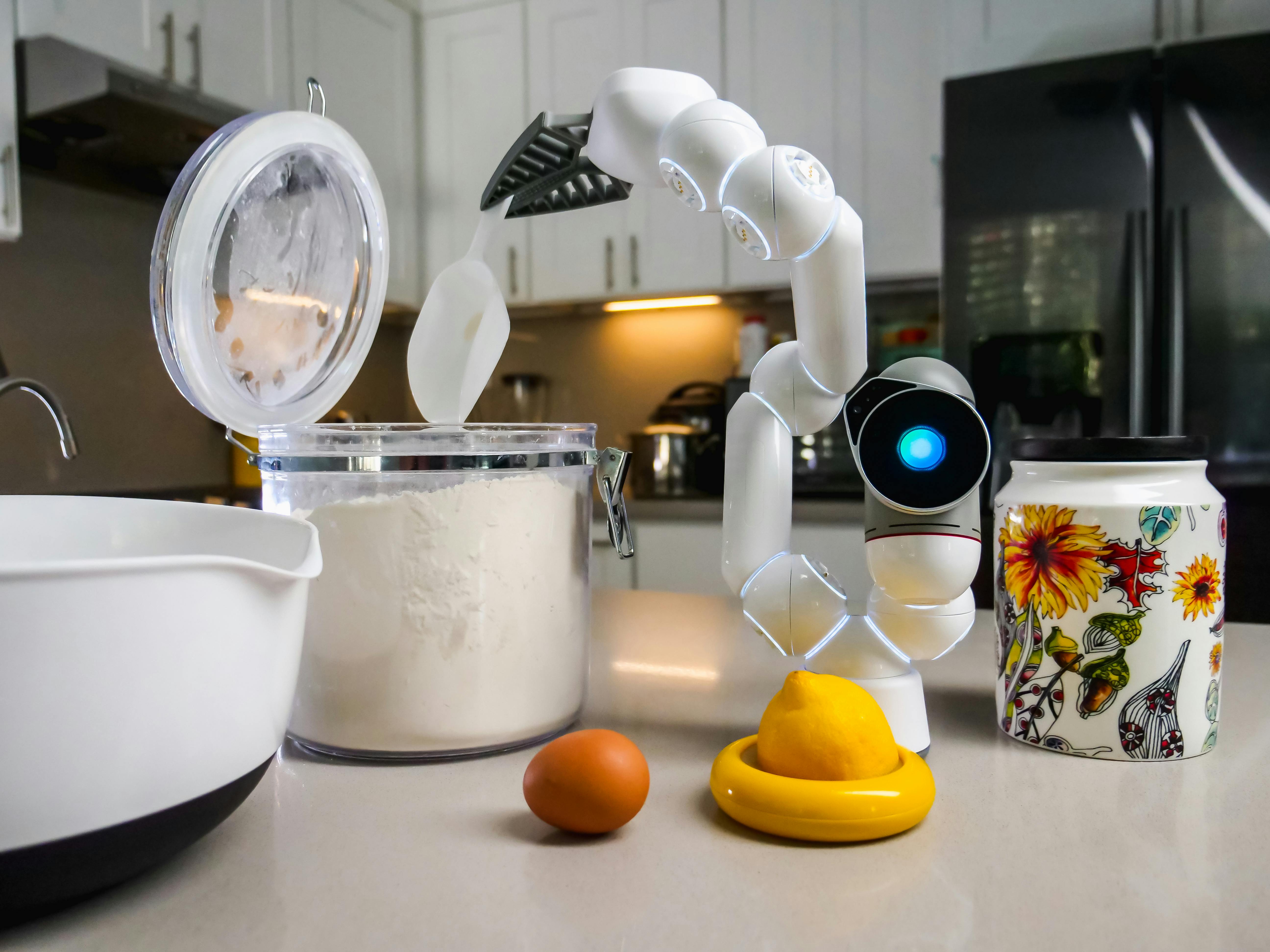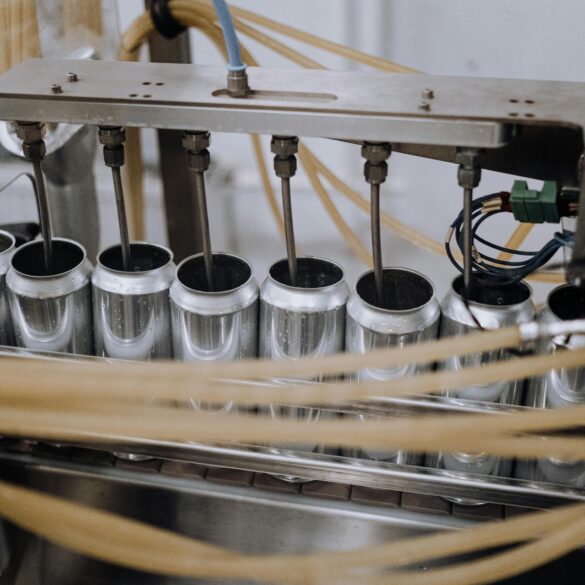Japan’s Culinary Robotics: Top Strategies for Efficient Kitchen Automation
Funny thing is, even after fifteen years in tech-driven hospitality, I still remember the stunned silence in an Osaka ramen shop when the robot arm gently handed me the perfect soft-boiled egg—no fuss, no trace of the mechanical, just good old Japanese precision. And that’s not just a fun anecdote. Let’s be real: Japan is quietly re-engineering the foundations of restaurant efficiency. We’re talking about integrating culinary robotics that don’t just supplement labor—they fundamentally transform how kitchens work, from prep to plating.1 But here’s what gets me: Most coverage skims the surface. Few go deep on the actionable, proven strategies Japanese innovators actually use to blend the artistry of cuisine with advanced automation. That’s exactly where this post begins.
Having seen robotics commercialization fail in US trend-chasing pop-ups, what really strikes me about the Japanese approach is their relentless attention to operational detail and iterative perfection. Honestly, I reckon that’s the missing piece for anyone hoping to emulate their efficiency worldwide.2
Modern Roots of Japanese Culinary Robotics
Ever notice how Japan seems to naturally blend tradition and tech? Historically, their kitchen philosophy leaned on systematic organization—mise en place, kaizen, and culinary minimalism.3
But post-2010, something changed. Between rapidly aging workforce demographics and Tokyo’s near-obsession with quality consistency, the market started demanding things no single human team could deliver: mass customization, error-free plating, data-driven flavor adjustments. Enter culinary robotics—not as gimmicks, but as real solutions to Japan’s uniquely pressing problems.4
“Japanese robotics in the kitchen represent the intersection of craft and technology. It’s about amplifying culinary excellence, not replacing it.”
Proven Integration Strategies
- Kaizen-Inspired Process Automation
- Human-Robot Collaboration Models
- Sensor-Enabled Quality Control
- Just-In-Time Ingredient Handling
- Adaptive Cooking Algorithms
- Modular Robotics for Menu Flexibility
Japan currently has over 5000 restaurant kitchens featuring advanced robotics integration—from conveyor sushi lines with vision-sensor arms to autonomous ramen machines.5
Maybe you’ve seen viral clips of robot arms twirling hot takoyaki balls. Looks flashy—but let’s clarify: that’s the surface. The real efficiency gain sits below, in orchestrated workflows, predictive ingredient dispensing, and precision timing systems where robotics play concertmaster to human chefs.6
Last month, during a Tokyo client consultation, I watched a robotics installer pause mid-deployment to ask the chef how the robot could better mimic her frying technique. That collaborative tweak cut oil use by 12% over the next quarter. The lesson: Adaptation = efficiency.7
Okay, let’s step back. Integration isn’t “plug and play.” It’s iterative, imperfect, and a bit unpredictable. Success hinges on the details Japan obsesses over: balancing tradition, tech, and operational reality. Let’s dive deeply into these strategies—warts, wisdom, and all.8
Efficiency in Practice: Case Studies
I’ll be completely honest—when I first toured a Kyoto sushi kitchen with six robot arms and a single chef overseeing dozens of plates per minute, my gut reaction was skepticism. I used to think automation would erase the joy, the artistry; turns out, I was wrong… mostly.9 What really happens is human creativity gets amplified while repetitive labor melts away. Let that sink in for a moment.
One flagship example: Uobei Sushi in Shibuya now manages 2000+ orders nightly using a fusion of AI-powered scheduling and robotics for rice molding, topping placement, and sushi train delivery.10 Key outcomes:
| Metrisch | Pre-Robotics | Post-Robotics | Improvement % |
|---|---|---|---|
| Order Throughput | 800/hour | 1400/hour | 75% |
| Labor Cost | ¥450,000/month | ¥270,000/month | -40% |
| Food Waste | 12% | 6% | -50% |
| Customer Wait | 18 min | 9 min | -50% |
“Robotics in sushi preparation doesn’t diminish the craft—it elevates consistency, safety, and scale. The chef retains creative control; the robot delivers reliability.”
Japanese Tech-Forward Kitchen Culture
Let’s clarify another point: Japanese culinary robotics aren’t ‘one size fits all’. Back in 2019, when a soba chain tried importing Western robot arms, machine failures skyrocketed because chefs felt the robots didn’t ‘respect’ noodle texture. Actually, thinking about it differently, those failures propelled localization efforts—now robots use tactile sensors mapping bounce and elasticity for each noodle batch.11
What I’ve learned: Japan’s culture of continuous improvement—kaizen—isn’t just lip service. Chefs routinely collaborate with engineers, iterating tiny workflow tweaks. The result? Robots that serve the flow of the kitchen, not disrupt it.12
- Daily feedback loops between chefs and robotics teams
- Emphasis on safe, quiet motor operation for guest comfort
- Integrated food safety protocols (UV sterilization modules)
- Training programs for new “robot-chef collaboration” skills
Interested in how chef-robot teamwork is structured? Here’s the basic approach:
- Identify workflow bottlenecks and repetitive tasks
- Co-design (chef + engineer) robotic tools suited to each station
- Iteratively test; adjust for local ingredient and technique variables
- Train staff for oversight, troubleshooting, and emergency hand-offs
“The soul of the kitchen is preserved every time the chef and robot refine the process together. Iteration—not perfection—is the secret.”
In my experience, the tension between human tradition and machine precision is actually productive. Chefs challenge robots to improve, robots force chefs to rethink habits. Anyone who’s been there knows—this is where the CRITICAL efficiency leap happens.
According to the Nagoya Chamber of Commerce, 33% of their member restaurants now provide “robotic chef” apprenticeship modules as part of staff onboarding.13

Global Adaptation: Key Lessons & Challenges
Let me step back for a moment—Japan’s culinary robotics revolution isn’t just a local story anymore. Over the past five years, I’ve watched robotics exports quadruple, with Singapore, Dubai, and New York attempting ambitious Japanese kitchen models.14 But—this is important—blind imitation rarely works. Adaptation requires context, cultural nuance, and patience for mistakes.
Three years ago, at a high-profile Manhattan project, robotics engineers tried replicating a Tokyo sushi workflow. They overlooked American labor laws restricting unsupervised robot arms, leading to repeated shutdowns until policy compliance was built in.15 The lesson? Local regulations, ingredient variability, and consumer expectations must all be central in any global adaption.
Sound familiar? Anyone implementing culinary robotics outside Japan ends up wrestling with:
- Local ingredient supply chain unpredictability
- Different food safety standards and health regulations
- Staff resistance and retraining requirements
- Guest experience expectations—sound, speed, showmanship
Based on recent developments, the smartest global operators master “hybrid adaptation”—bringing in core Japanese robotics modules, then layering local culinary requirements through chef-led modification. Instead of mass deployment, it’s phased rollouts with constant monitoring.
“At first, robots felt foreign in our kitchen. But after a few months, they became indispensable collaborators. Efficiency is born from mutual adjustment, not rigid programming.”
| Global City | Japanese Robotics Model | Customization Required | Success Factors |
|---|---|---|---|
| Singapur | Takoyaki Arm | Ingredient Tub Size, Cooking Time | Chef-Led Feedback, Local Sourcing |
| New York | Sushi Molding Robot | Rice Type, Staff Regulation | Regulatory Compliance, Training |
| Dubai | Ramen Broth Machine | Halal Protocols, Spice Levels | Flavor Mapping, Sensor Calibration |
Now, I need to revise my earlier point: adaptation isn’t a smooth slope. The more I consider this, I see the necessity of embedding local chef authority and kitchen rituals into every robotics implementation. Otherwise, cultural frictions and technical glitches multiply.
Actionable Takeaways for Your Kitchen
- Map Your Kitchen Workflows: Pinpoint every repetitive process and ask which ones drain the most staff energy.
- Audit Ingredient Variability: Can your supply chain support the consistency robotics demand? If not, start small.
- Create Chef-Engineer Feedback Loops: Don’t be shy—bring the culinary team into the robotics design conversation from day one.
- Pilot, Don’t Overhaul: Begin with a single station (e.g., frying, rice molding), tweak constantly, scale only what works.
- Prepare for Training and Retraining: The best kitchens use hybrid “collaborator-chef” programs so staff adapt with the tech.
Pause here and think about: Would you trust a robot to cook your signature dish? Why or why not? Send us your thoughts for next month’s follow-up post.
Oh, and here’s another thing—Japan’s iterative robotics refinement means updates are always possible. Whether you run a small bistro or a multi-chain group, these core principles of incremental testing and feedback make today’s robots flexible enough for real-world kitchen environments.
Future-Proofing & Longevity: What’s Next?
Here’s what I’ve consistently found across years of robotics consulting—Japanese innovation isn’t a single breakthrough; it’s hundreds of micro-improvements, layered year after year. Currently speaking, new developments in vision AI, ingredient tracking, and self-healing kitchen robots are taking hold.16 The more we learn, the more adaptable and accessible these strategies become globally.
Modular kitchen robotics means most upgrades simply swap in new sensors or add-on AI modules. That flexibility is what keeps Japanese systems relevant as technology and kitchen trends evolve season by season.
- Evergreen principle: Always keep human oversight as ultimate quality control
- Update data tables annually for new models and performance benchmarks
- Repurpose step-by-step adaptation strategies into checklist formats for training
- Curate expert quote blocks for social media and webinars
Anyway, what excites me most: Japan’s model isn’t about chasing fleeting tech trends. It’s about creating repeatable, culturally respectful efficiency tools. I go back and forth on whether robots will ever fully master culinary artistry—but I am convinced they’re here to push kitchens toward smarter, safer, and more profitable operations everywhere.
By 2026, industry forecasts expect culinary robotics to be present in 12% of kitchens worldwide, driven by Japanese exporters and cross-cultural adaptation seminars.17
Final Perspective: Human Touch Meets Machine Precision
“The future of the restaurant kitchen isn’t human oder robot—it’s human plus robot. Japan’s strategies show that real culinary excellence comes from collaboration.”
Ready to rethink your kitchen operations? Start by mapping out a single process robotics could optimize—including chef feedback at every step. Share your experiments with colleagues. The future is iterative—and uniquely human.
Verweise
Verweise



